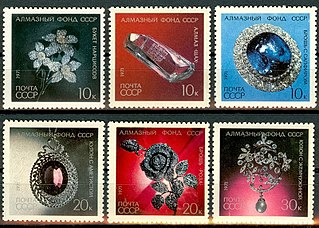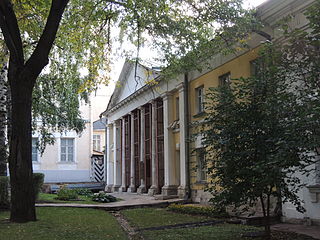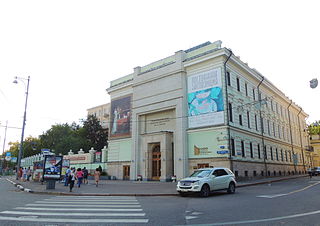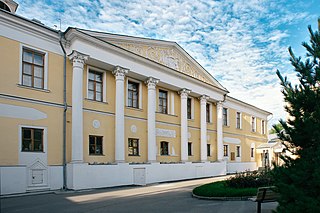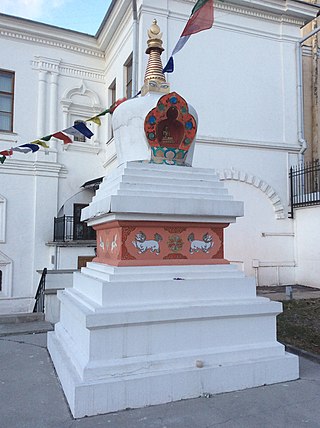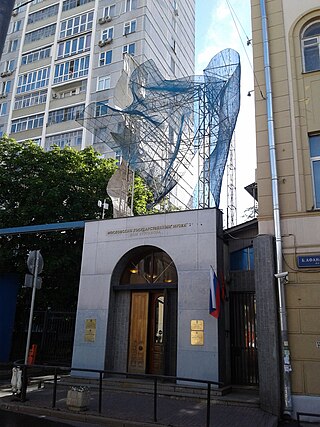Self-guided Sightseeing Tour #18 in Moscow, Russia
Legend
Guided Free Walking Tours
Book free guided walking tours in Moscow.
Guided Sightseeing Tours
Book guided sightseeing tours and activities in Moscow.
Tour Facts
2.3 km
52 m
Experience Moscow in Russia in a whole new way with our free self-guided sightseeing tour. This site not only offers you practical information and insider tips, but also a rich variety of activities and sights you shouldn't miss. Whether you love art and culture, want to explore historical sites or simply want to experience the vibrant atmosphere of a lively city - you'll find everything you need for your personal adventure here.
Activities in MoscowIndividual Sights in MoscowSight 1: Diamond Fund
The Diamond Fund is a unique collection of gems, jewelry and natural nuggets, which are stored and exhibited in the Kremlin Armoury in Russia. The Fund was opened in 1967 and its collection dates back to the Russian Crown treasury instituted by Emperor Peter I of Russia in 1719.
Sight 2: Prince Golitsyn Family Estate
The Golitsyn Estate in Znamensky Lane is an estate complex built in 1759-1766 for Prince Mikhail Golitsyn according to the project of the architect Savva Chevakinsky. From 1775 to 1776, Catherine II lived in the Golitsyns' estate, who came to Moscow to celebrate the conclusion of the Kuchuk-Kainarji peace treaty with the Ottoman Empire. Especially for the Empress, a wooden Prechistensky Palace was erected on the territory of the estate, connected to the main building and neighboring estates by long corridors. After the departure of Catherine II to St. Petersburg, the structure was dismantled.
Wikipedia: Усадьба Голицыных в Знаменском переулке (RU), Website
Sight 3: Gallery of European and American Art
The Gallery of Art of Europe and America of the XIX-XX centuries is an art gallery that presents works by Western European and American artists of the XIX-XX centuries, including the collections of impressionists and post-impressionists from the collections of patrons Sergei Shchukin and Ivan Morozov. The museum is located in the left wing of the Golitsyn estate in Znamensky Lane, which has been part of the Pushkin Museum (Pushkin Museum of Fine Arts) since the early 1980s. The opening of the gallery took place in 2006 as its branch.
Wikipedia: Галерея искусства стран Европы и Америки XIX—XX веков (RU), Website
Sight 4: Усадьба Лопухиных
The Lopukhin Estate is a manor complex built at the end of the XVII century by Fyodor Lopukhin on the territory of the White City. In 1775-1776, the mansion was part of the temporary Prechistensky Palace, created to house the imperial court at the time of the celebration of the Kuchuk-Kainarji peace with the Ottoman Empire. At that time, the favorite of Catherine II, Grigory Potemkin, lived in the building. After the October Revolution, the site was transferred to the jurisdiction of the Cheka, and in the 1960s, a branch of the Marx and Engels Museum began to operate on the basis of the estate. At the end of the 20th century, the building was repaired under the leadership of the International Centre of the Roerichs and converted to accommodate the Roerich Museum, which has been a branch of the Museum of Oriental Art since 2016. In 2019, the estate was transferred to the use of the Pushkin State Museum of Fine Arts.
Sight 5: Ступа трёх драгоценностей
The Stupa of Enlightenment or the Stupa of the Three Jewels, located in the courtyard of the Lopukhins' estate in Moscow, was built in 2008. Before the opening in 2017, the stupa in Otradnoye was the only non-decorative stupa in Moscow.
Sight 6: The Bourganov House
The Burganov House is a Moscow state museum created in 2001, based on the workshop of sculptor Alexander Burganov. It is located at Bolshoy Afanasyevsky Lane, 15, building 9.
Share
How likely are you to recommend us?
Disclaimer Please be aware of your surroundings and do not enter private property. We are not liable for any damages that occur during the tours.
GPX-Download For navigation apps and GPS devices you can download the tour as a GPX file.
